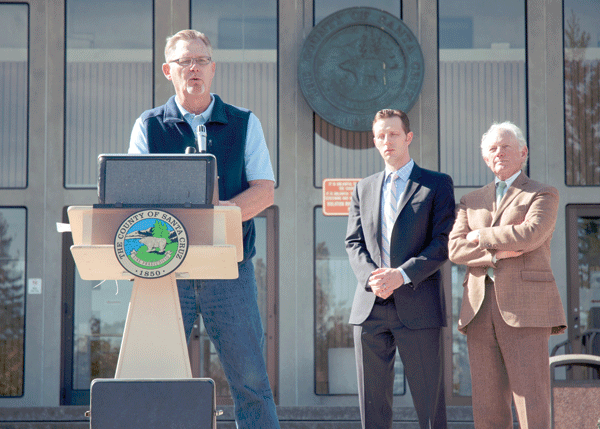The County of Santa Cruz has advocated for a 20 percent reduction in water usage in the county to combat a nearly rainless winter.
The County, in conjunction with Gov. Jerry Brown’s January 17 declaration of a statewide drought, declared a drought in Santa Cruz County on Tuesday, January 28.
Santa Cruz is experiencing its third consecutive year of below-average rainfall resulting in the lowest level ever recorded in the San Lorenzo River in January and Loch Lomond reservoir at 65 percent of its capacity with no major storms on the horizon.
“Realistically, this isn’t something we have faced in this area in quite some time,” said Santa Cruz County Supervisor Zach Friend. “We need very honest discussion, without the politics, about what we’re going to do moving forward in this county.”
Friend continued on Tuesday to say that decision makers in the county have allowed water supply discussions to become too politicized, considering that water is essential to the economy and to every day life.
A group of leaders from various water agencies in the county spoke about measures they would take to reduce water usage and ensure a water supply.
Jay Mosley, the Scotts Valley Water District Board President said the daily demand for water in Scotts Valley is up 14 percent from this time last year and that the district is preparing to implement its water storage contingency plan. Stage 2 of the plan would be a voluntary 15 percent reduction and Stage 3, a mandatory 20 percent restriction. Already in place is an ordinance that requires no spray irrigation between 10 a.m. and 5 p.m., no hosing off of hardscapes and no irrigation run-off.
Long-term solutions the district is taking include working on conjunctive use, acquiring land to recharge the groundwater supply, storm water management, conservation house calls and continuing rebate programs, Mosley said.
“I think it’s important for us to come together regionally,” he said.
San Lorenzo Valley Water District General Manager Jim Mueller said the district’s board will consider a 20 percent voluntary conservation measure on February 6 and will evaluate in the next two to three months what further measures need to be taken.
“We need to begin to implement
With surface water, including rivers and creeks, at historical lows, Mueller said the district has stopped drawing from surface water.
“The district has shifted almost entirely to groundwater,” he said.
Soquel Creek Water District, which serves the Capitola and Soquel areas, has a more dire situation. The groundwater basin the district draws its drinking water from is beginning to be contaminated by seawater. District officials say it would take at least 20 years and reduced pumping by 35 percent to restore the basin.
John Ricker, Santa Cruz County’s Water Resources Division Director, said the county is working on ways to create a more sustainable regional water supply. He said it will likely be a combination of having supplemental water supplies, groundwater recharge, using recycled water, desalinization and water transfers.
“We see this current drought as a call to action,” Ricker said.
Water districts and the Resource Conservation District of Santa Cruz County all offer rebates and tips to conserve water.












